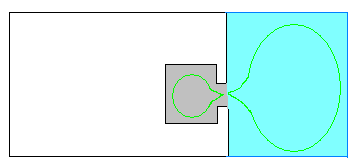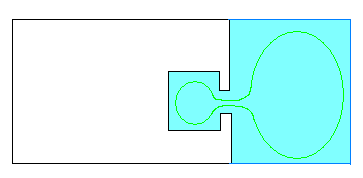Working Methods
Milling Machining operations are versatile, fully adapted to your needs and your working methods whether they are machining area-oriented or operation-oriented.
You can either define the machining areas on your part and then assign a machining operation to each of them or you can define your machining process as a series of machining operations with an area to machine for each machining operation. A machining area can be:
- The whole part (for example, in roughing).
- A subset of the faces on the part.
- A subset of faces on the part with a limiting contour.
Here is a suggested order for machining operations in a manufacturing program:
- Roughing
- (Semi-)finishing
- Detection of unmachined areas
- Reworking of unmachined areas
- Generation and output of documentation.
Area-oriented methodology is useful when you have a complex part to machine and you know in advance what kind of machining operation you are going to apply to each separate area.
This approach is of great use when, for example, you are going to machine a "family" of similar parts and when you have dedicated machines for mass production.
You define the areas on one part, you assign a machining operation to each area, and then you machine. At the end you have a program that you can apply to all of the "members" of the "family" at least working cost because:
- The machining strategy has already been defined (chosen machining operation)
- The tool has already been defined
- Only the area need be redefined
- You know exactly what kind of output you require
- And as a result the computation can be run in batch to further reduce time loss.
The only mandatory data for a machining operation is the area to machine (with the exception of roughing which requires a rough stock too) and all of the other parameters have default values.
We recommend that you use the default parameters first unless you are sure of the values you wish to enter.
Use operation-oriented machining when you want to progressively define your manufacturing program operation-by-operation sequentially. Each machining operation has the area it deals with defined as part of its data.
This approach is useful for single or limited part production because it allows you to define your requirements step-by-step. The only mandatory data for a machining operation is the area to machine (with the exception of roughing which requires a rough stock too) and all of the other parameters have default values.
We recommend that you use the default parameters first unless you are sure of the values you wish to enter.

